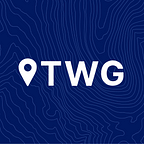GAAD @ TWG: How The Wanderlust Group Designs for Accessibility
May 20, 2021, marks the 10th Global Accessibility Awareness Day, which champions digital access and inclusion, and the more than one billion people with disabilities and impairments.
Digital inclusion should be embedded in the mission of every company. Here at TWG, making our apps and websites inclusive speaks directly to our mission to get more people out in nature: our goal in creating software is to make it easier to find, research, and experience new outdoor adventures regardless of age, race, gender, sexuality, disability, or experience level. Getting out in nature is something all people should experience as much as possible — it makes sense that the apps that can make that happen be accessible to all.
Prior to the end of 2020 — so, the first five years or so of TWG — we’d had a total of four engineers on our team. Renewed funding has helped us expand our Product, Engineering, and Design teams, and thus more deftly incorporate accessibility into each project as we scope it out and build. We’ve also made tweaks to our existing apps to get them up to snuff.
Recent Accessibility Updates
Some of the recent accessibility updates include:
- Incorporated accessibility guidelines in our product workflow
- Installed axe DevTools chrome extension to spot accessibility issues as we build
- Aligned with our Marketing team to increase readability of the blog and newsletters by tweaking the font size and color, alignment, and vertical spacing
As well as less visible but crucial updates throughout the site, such as:
- Updating our use of heading tags in our code to create clearer page hierarchy
- Forming appropriate naming conventions for states and buttons like “inactive” and “active”
- Updating our reusable Form inputs to meet WCAG AA standards
- Adding a href=”#” to the Select button on customer search so that it is now reachable by the tab key, making the Search functionality more accessible for keyboard only users
We’ve also implemented accessibility as an organization, by way of cross-team accessibility trainings, documentation, mapping larger improvement projects in Trello, and committing to individual accessibility goals.
3 Ways TWG Designs for Accessibility
From here on out, we’ll be using the tools we’ve adopted throughout all new product development, and will incorporate more as we learn about them.
Some of the tools and methods we employ:
Readability
We use a Color Contrast Checker for readability enhancement, both in the engineering and design stages. There are several reliable tools out there that ensure we meet compliance requirements; we mostly rely on a combination of Webaim and the Figma plug-ins Able and A11y — Color Contrast Checker.
We do our best to aim for “AAA’ compliant which creates the most inclusive user experience, and we avoid anything below “AA”, which is a good commitment to accessibility.
Education
We attend accessibility bootcamps throughout the year to ensure we’re consistently in compliance with the most recent accessibility standards and technology.
Several of the engineers attended sessions at Axe Con by Deque, a free two-day conference with many speakers and topics in the area of designing for accessibility. There’s another session coming up this Thursday, and we’re looking into attending more including this one from Deque University.
Dialogue
TWG uses Slack to communicate and share information throughout the day, so it was only natural that we create an accessibility channel (named “a11y” — see why) to discuss new developments, tools, and our team’s progress in accessibility.
We’d love to hear your thoughts on our progress thus far with regards to accessibility: email becky@dockwa.com to get in touch.
Learn more about Global Accessibility Awareness Day.
Learn more about The Wanderlust Group.
